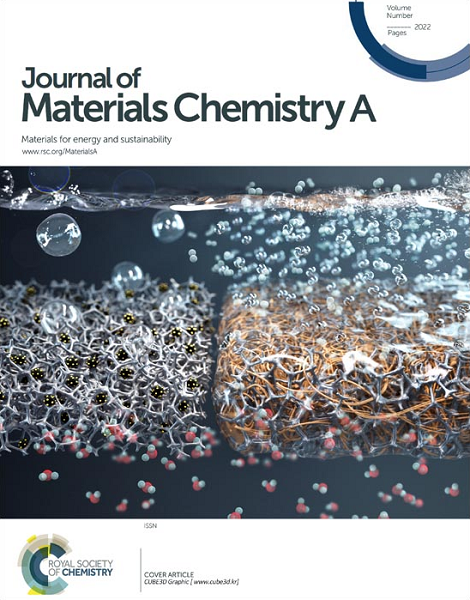Nanoconfinement-Driven Interface Boosts Zinc Deposition Kinetics toward Dendrite-Free Zinc Anodes
IF 9.5
2区 材料科学
Q1 CHEMISTRY, PHYSICAL
引用次数: 0
Abstract
Dendrite growth and side reactions are two major obstacles for aqueous zinc-ion batteries (AZIBs) in field of stationary energy storage. While constructing a corrosion-resistant interface is an effective approach to stabilize zinc anode, slow deposition kinetics at this interface remains a significant challenge. Herein, we construct an ion-conducting Zn-based MOF (Zn-BTC) layer on the zinc anode by an anodic growth method. The Zn-BTC layer effectively mitigates interfacial corrosion by physically separating zinc from the electrolyte. Moreover, the multiscale nanopore architecture of Zn-BTC creates nanoconfined environments that manipulate ion transport behaviors and thus boost deposition kinetics. As a result, the Zn-BTC@Zn symmetric cell achieves ultra-stable cycle life of over 3000 h and low polarization voltage of 30 mV at 1 mA cm-2 and 1 mAh cm-2, compared to Bare Zn (less than 300 h, 42 mV), respectively. Furthermore, the Zn-BTC@Zn//NH4V4O10 full cell maintains a capacity of 91.5 mAh g-1 after 10000 cycles at 3 A g-1, with a capacity retention rate of 65.8%. This work proposes a new interfacial layer with rich multiscale pore structure, which can effectively inhibit the growth and corrosion of zinc dendrites and can also be applied to other metal anodes.纳米约束驱动界面促进锌沉积动力学向无枝晶锌阳极
枝晶生长和副反应是影响锌离子电池在固定式储能领域应用的两大障碍。虽然构建耐腐蚀界面是稳定锌阳极的有效方法,但该界面的缓慢沉积动力学仍然是一个重大挑战。本文采用阳极生长的方法在锌阳极上构建了离子导电的锌基MOF (Zn-BTC)层。锌- btc层通过将锌从电解液中分离出来,有效地减轻了界面腐蚀。此外,锌- btc的多尺度纳米孔结构创造了纳米限制环境,操纵离子传输行为,从而提高沉积动力学。结果,Zn-BTC@Zn对称电池在1 mA cm-2和1 mAh cm-2下实现了超过3000 h的超稳定循环寿命和30 mV的低极化电压,而Bare Zn分别小于300 h, 42 mV。此外,Zn-BTC@Zn//NH4V4O10全电池在3 a g-1下循环10000次后仍保持91.5 mAh g-1的容量,容量保持率为65.8%。本工作提出了一种具有丰富多尺度孔隙结构的新型界面层,可以有效抑制锌枝晶的生长和腐蚀,也可应用于其他金属阳极。
本文章由计算机程序翻译,如有差异,请以英文原文为准。
求助全文
约1分钟内获得全文
求助全文
来源期刊

Journal of Materials Chemistry A
CHEMISTRY, PHYSICAL-ENERGY & FUELS
CiteScore
19.50
自引率
5.00%
发文量
1892
审稿时长
1.5 months
期刊介绍:
The Journal of Materials Chemistry A, B & C covers a wide range of high-quality studies in the field of materials chemistry, with each section focusing on specific applications of the materials studied. Journal of Materials Chemistry A emphasizes applications in energy and sustainability, including topics such as artificial photosynthesis, batteries, and fuel cells. Journal of Materials Chemistry B focuses on applications in biology and medicine, while Journal of Materials Chemistry C covers applications in optical, magnetic, and electronic devices. Example topic areas within the scope of Journal of Materials Chemistry A include catalysis, green/sustainable materials, sensors, and water treatment, among others.
 求助内容:
求助内容: 应助结果提醒方式:
应助结果提醒方式:


